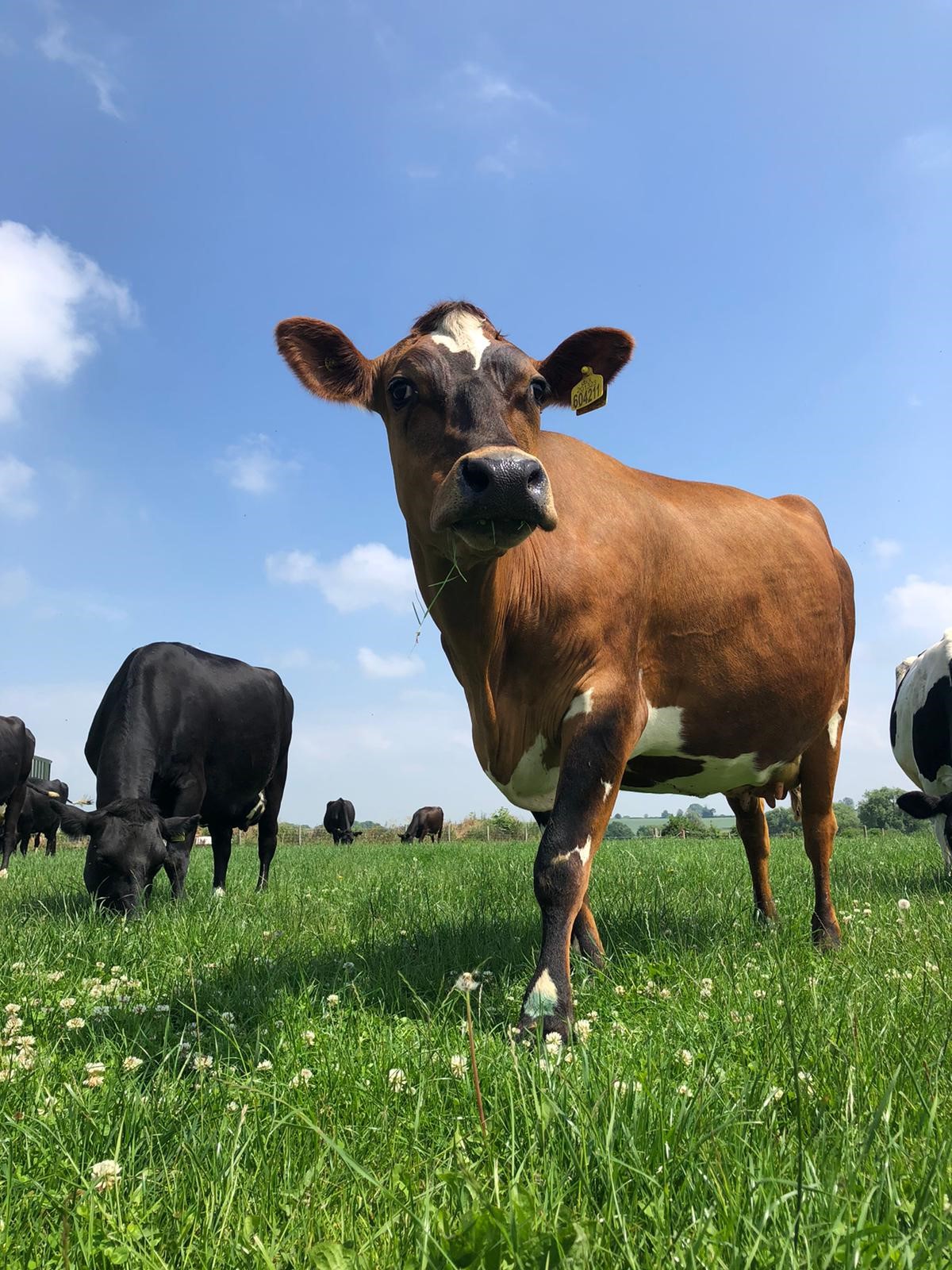- Home
- Knowledge library
- Meet Forage for Knowledge contributor Tony Evans
Meet Forage for Knowledge contributor Tony Evans
Measuring and testing grazed grass on farm in Leicestershire has not only helped Tony Evans to grow 12 t DM/ha to feed 300 cows, but also benefitted his day job as a business consultant.
The business
Manor Farm near Melton Mowbray, owned by Peter and Cheryl Holmes, has been contract-farmed by Anderson’s business consultant Tony Evans, in partnership with Wil Armitage, for 12 years; they have been succeeded by John and Emma Rudkin and their keen young family.
Three hundred cows, split-block calving producing 5,900 L and 470 kg MS/cow. Milk sold to Long Clawson as well as processed on farm into yoghurt; 78 ha milking platform and annual rainfall 575–600 mm. Tony has been supplying data to Forage for Knowledge since 2017.
What’s the benefit of contributing to Forage for Knowledge?
“It gives you discipline – it’s easy to lapse from regular measuring – and you can get some comparisons with others. On your own, you wonder if you are measuring correctly, particularly changes from previous weeks, and it’s a good way to identify differences”, says Tony. “Once you have different years of data, you can start to compare with last year and also look ahead and predict with a bit of confidence. But you have to process the data you collect (growth and quality) in something like Agrinet as a decision tool.”
He also finds that sampling helps him to understand what quality he is feeding. A recent analysis of 27% protein coincided with low milk urea. However, this result, plus increasing growth rates, gave him the confidence to not change feed.
“Forage for Knowledge makes you find time once a week to walk the farm, and it makes you plan ahead. You think you have no grass and then see it as you go into paddocks, plus you can spot overflowing troughs or fences that are about to break.”
How much grass can Manor Farm grow?
11.5–12 t DM/ha with the best-ever year growing at 110 kg DM/ha/day in mid-May. This year, peak growth hit 96 kg: “We have been to 0 kg in July and August in a hot year”, he adds.
What have you learnt about managing grass on this farm?
“If you keep between 2,900–3,100 kg DM/ha, you can definitely grow 12 ME grass all year round. And the importance of having this cover in front of the cows, so if grass growth drops off, you can slow the round by reducing the stocking rate or introducing other feed. In July, we start drying off autumn calving cows to lighten the load on the platform.”
How does it help the day job?
“When I’m talking to clients, I can relate to what they are doing, and they ask me what I’m doing as a comparison. It’s also useful when I need to work out a yield of 6,000 L from 1.2t and I can validate it, check the stocking rate, or ask if a client has missed an opportunity and identify areas where they could improve.”
Grazing challenge this year?
“Our biggest challenge every year is to get through July and August. We can go from having no rain, to some, to just enough rain. This year, instead of feeding silage in troughs, we are doing cut n carry: grass from off-lying silage land is being baled and carted to feed cows in 24 hours. We are netting but not wrapping it, so save on plastic.
“Half the herd is inside feeding in the morning, the other half in the paddock, then we swop in the afternoon. Because it has been wilted, the grass is more digestible, and the cows are hoovering it up.”


